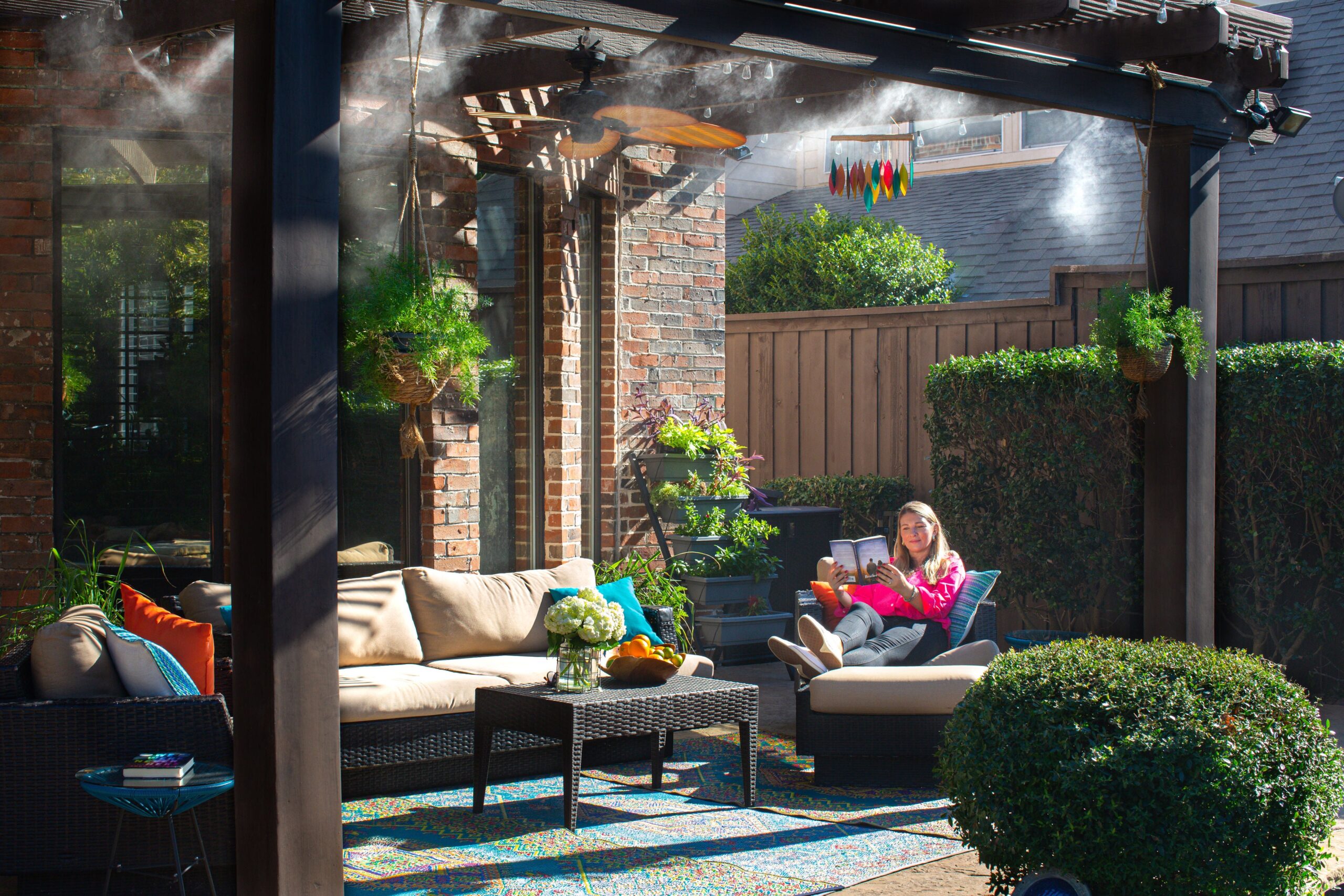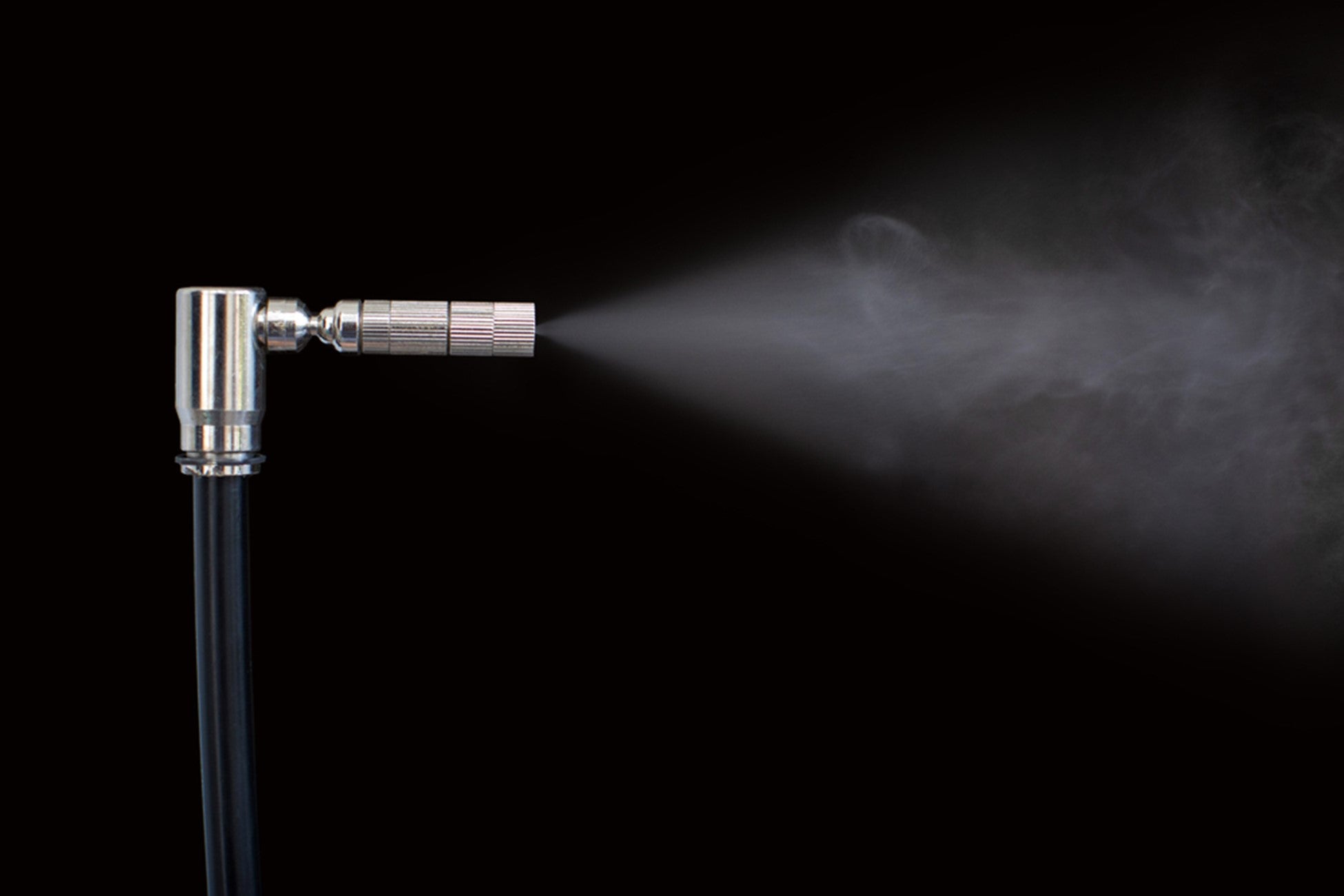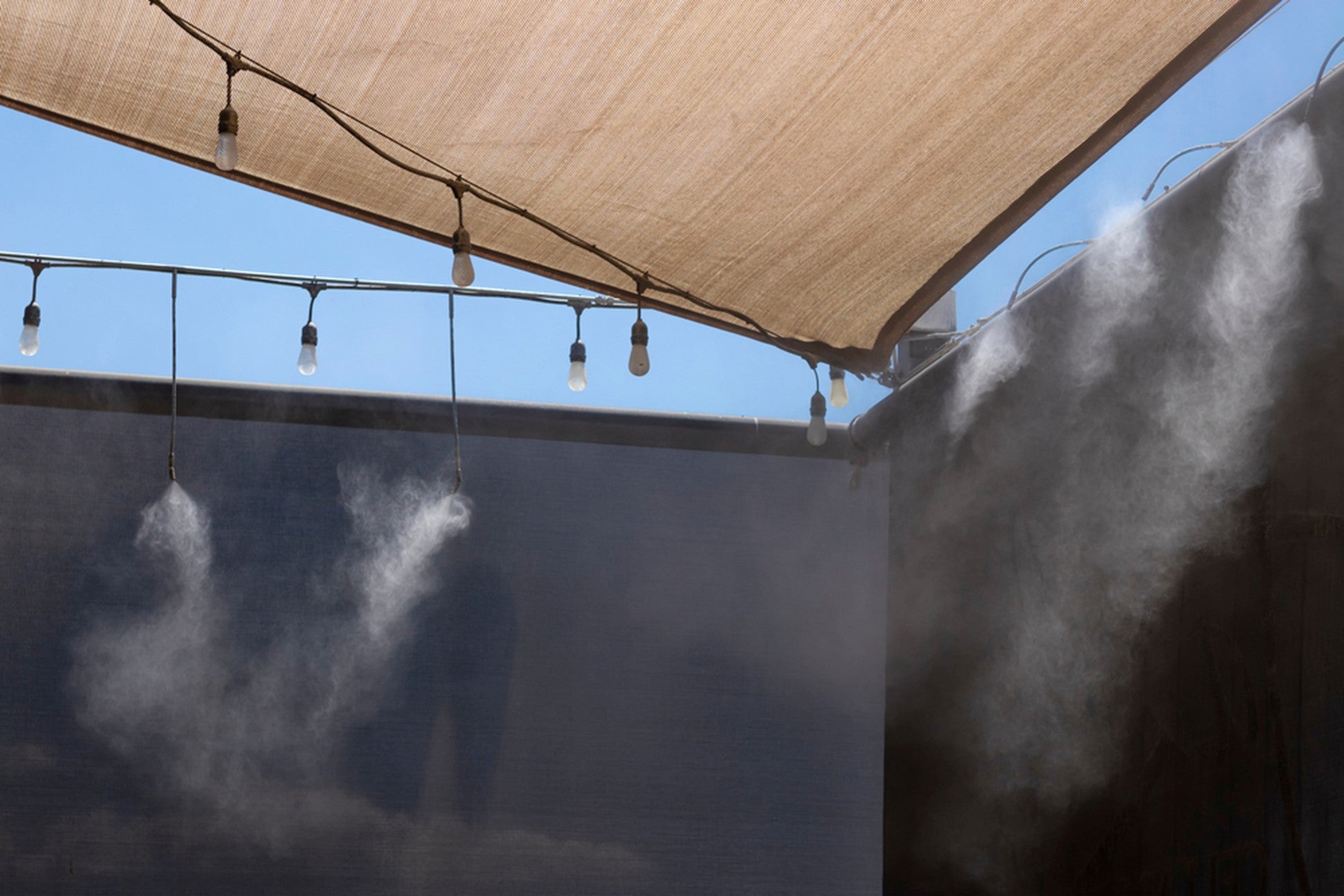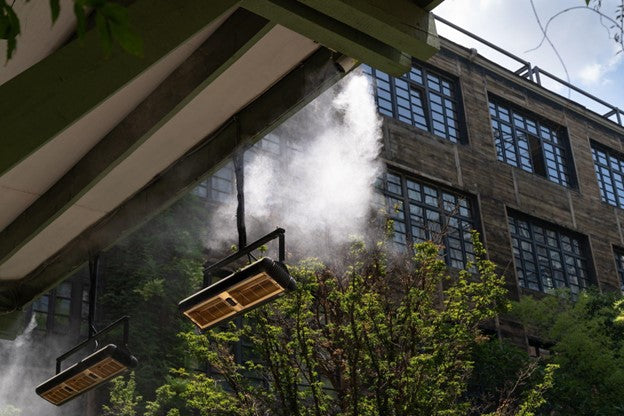
High pressure misting systems aren’t overly complicated. They’re only really made of three main parts. Tubing, nozzles, and a pump. Those three things work together to create all the amazing effects that more and more people are learning about and cherishing in their lives.
Each part of the overall system impacts your results, but the nozzles are some of the most important components.
Today, we’re going to go over why nozzles are so important and how to choose the right misting nozzles.
Let’s get started.
Why are Misting Nozzles Important?
They are probably the most important part of your system, and choosing the right misting nozzles is crucial. The pump determines the speed at which water moves through the tubing, and the tubing carries the water, but the nozzles determine the direction in which water is sprayed and how thinly it is dispersed.
If the nozzles are wrong, you can have the perfect pump and tubing, and you’ll get lackluster effects.

The size of the nozzles, the orientation of the nozzle holes, and several other aspects affect this, too. It’s not as simple as choosing “the best” misting nozzles and expecting amazing results.
Which Material is Best for Nozzles?
The first thing you need to consider when choosing misting nozzles is the orifice material they are made of.
The best material for this is ceramic. There are plastic, stainless steel, and ceramic nozzles available. Plastic is the budget-friendly option, but it’s not optimal.
Stainless steel is great. It’s it is less sensitive to freezing, lasts for a long time, and is durable. But, water under very high pressure works as a sandpaper and this will wear out stainless steel material sooner than ceramic.
Ceramic provides the best performance. It's practically impervious to water damage, and it’s made to high-quality standards. The only drawback is that it’s weaker against impacts and very sensitive to freezing weather.
So, if you disassemble your system regularly, such as during the winter time, you risk dropping something and breaking a nozzle fairly easily. Of course, proper disassembly and nozzle installation techniques prevent this from happening.
These require less maintenance, look great, and perform to the highest standards.
Some things that you’ll want to consider when choosing a nozzle material include how much maintenance you’re willing to do, your budget, and the environment in which the nozzles will be used.
What Size is Best for Nozzles?
The size of the nozzle you use is important. It will likely coincide with the size of the nozzle holes, which determine how thinly the water is dispersed. If the holes are too large, you’ll just get streams of water instead of pleasant mist.
The larger the overall nozzle orifice is, the more water gets out. This means water is dispersed over a larger area, and it’s spread out more. This, along with the high amount of pressure blasting the water out, is what creates the instant-evaporation effect.
Nozzle Orifice Sizing Chart
The size of the full nozzle unit itself isn’t exactly the most important part. The size of the orifices on the nozzle determines how well water is dispersed. These are the small holes in the nozzle that disperse water.
Think of a traffic cone that has a bunch of small holes drilled into it. That’s what a single nozzle unit looks like.
Unfortunately, this is where things get a little complicated. The size of the nozzle orifices is directly attached to the environment you’ll be using it in. However, we have a nifty chart to help you choose the right size.
We’ll break this into a few different climate zones.
Humid areas should have nozzles with orifices no larger than .004 inches in diameter. There is already a lot of moisture in the air, and while inserting more via a misting system can create positive benefits, too much can cause problems evaporating.
Hot climates, such as Texas, desert part of California, and similar areas, can benefit from orifice sizes around .006 inches in diameter. This spreads the water thin, and the hot air instantly evaporates it to produce all the effects that people love about high pressure misting systems.
Finally, in extremely hot climates, usually closer to the equator like southern Texas or Arizona, .008 inches in diameter is optimal.
How Many Nozzles Should You Have?
Choosing the right number of misting nozzles in your system is also important. If you have too many, the area will be too saturated by water. If you have too few, you won’t get the effects you’re looking for.
Here are 3 general nozzle counts for cooling a standard patio area that you can use to determine how many nozzles your system should have.
If you have a fully open space with no roof or walls, you’ll need 1 nozzle for every 6 to 8 square feet of space.

If you have a gazebo with hard top roof and all 4 sides open, you’ll need 1 nozzle for every 13 to 15 square feet of space.
The issue with this is that the setup of the area is highly important. Not only do you have to think about the square footage you need to cool, but you need to think about height of the misting line.
If misting line height is below 9ft, you would need to reduce nozzle size by one size to keep optimum results.
Getting Help for Choosing Misting Nozzles
Choosing misting nozzles is a far more complicated topic than it seems. The basics are easy to understand, but several major variables can change your needs dramatically.
Luckily, you don’t have to calculate everything on your own.
The team at aerMist can help you determine exactly what you need for your nozzles, tubing, and pump, quickly and without a hassle. Then, we can point you toward the perfect setup for you.
Don’t try to figure it out on your own. Contact aerMist today for top-quality service and guidance.



